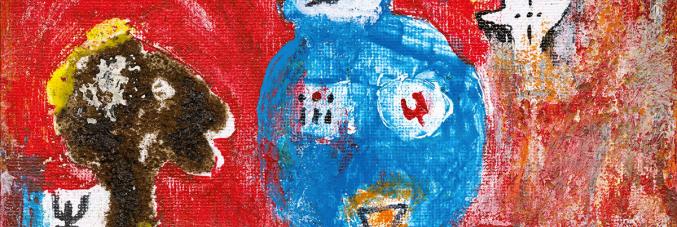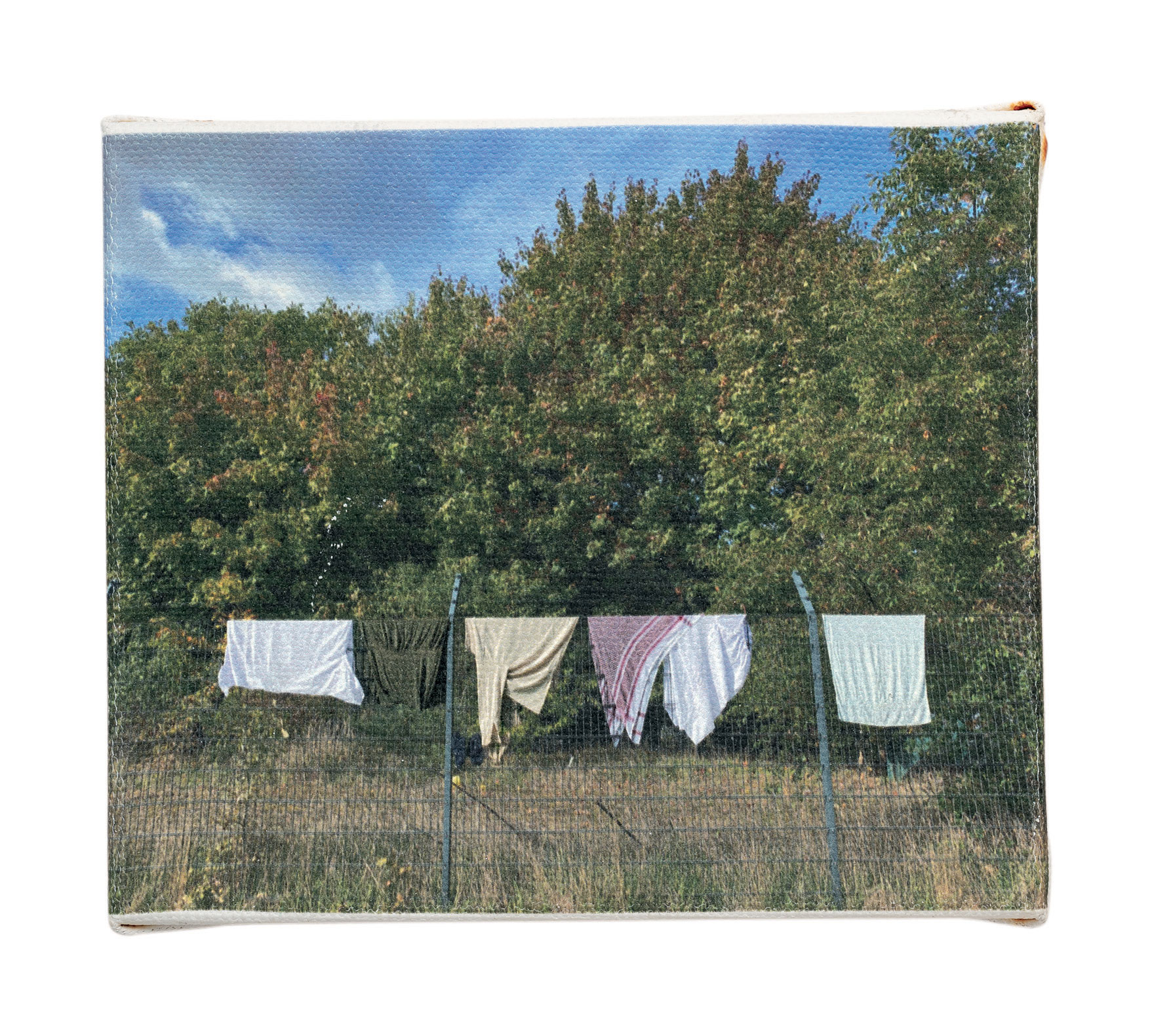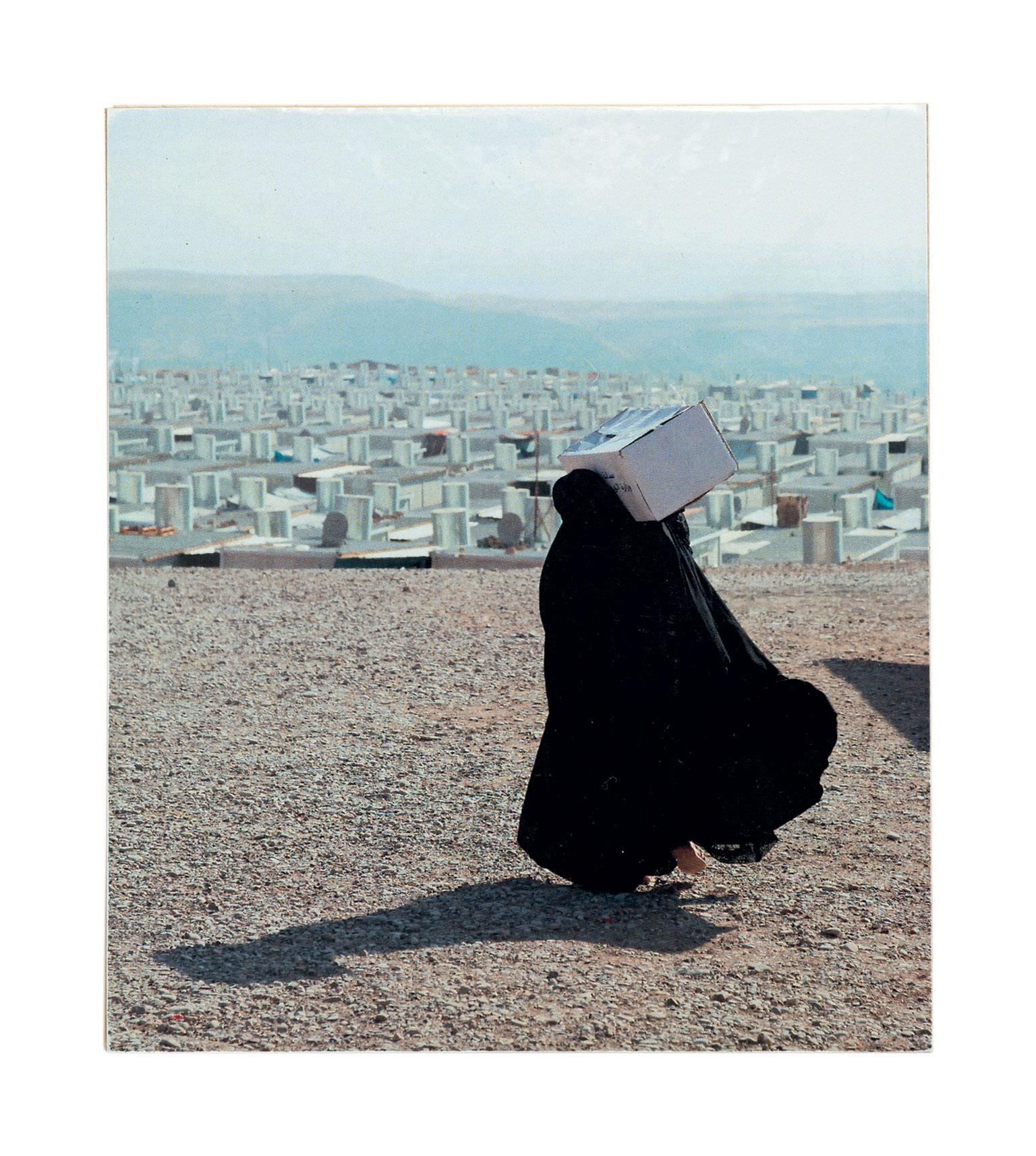
Out of Place. Art and Stories from the World’s Refugee Camps
30.07.2025
(Photo: Adoku Zambé, Il passaggio, 2023)
The exhibition Out of Place. Art and Stories from Refugee Camps Around the World, organized by the Imago Mundi Foundation in collaboration with the University of Padua and the Department of Culture of the Municipality of Padua, has been extended until August 31 in the Ancient Courtyard of Palazzo del Bo.
Open to the public daily with free admission from 8 AM to 8 PM, the exhibition is held under the patronage of the United Nations High Commissioner for Refugees (UNHCR).
Based on research conducted within 18 of the largest existing refugee camps today, the exhibition showcases the testimonies—artworks and stories—of 264 artists who currently live in these settlements or have experienced similar conditions in the past. Alongside the 284 works they created in the 10x12 cm format, the exhibition also features a video installation and an art installation, offering a broader reflection on the current global refugee crisis.

After Kutupalong, in Bangladesh, the exhibition presents different testimonies from Africa with the largest refugee camps in Kenya – Dadaab and Kakuma –, another two representative settlements in Uganda – Nakivale and Bidibidi, the camp of Dzaleka in Malawi, the one in Nyabiheke, Rwanda, and the settlement of Smara with the adjacent El Aaiun, Awserd, Boujdour, and Dakhla, in Algeria. The inquiry then turns to the Middle East, to open the doors of Za’atari, the biggest camp for Syrians, and to five Palestinian camps: Baq’a, Hittin, Irbid, Madaba and Souf, all in Jordan. Added to this map are artists who, from the 1980s until the current day, have lived in similar conditions in other geographical areas, including Kurdish and Yazidi artists who tell the complicated story of their people. A section on Afghanistan features the works and stories of 40 artists who have left their country or continue to live within its borders since the Taliban takeover in 2021. Completing the exhibition are accounts of migration to Europe from Ukraine and via the Mediterranean routes, along with a section devoted to migration corridors in South and Central America, with a focus on the Mexico-U.S. border.
“Exiles, émigrés, refugees, and expatriates uprooted from their lands”, wrote Edward Said in Reflections on Exile, “must make do in new surroundings, and the creativity as well as the sadness that can be seen in what they do is one of the experiences that has still to find its chroniclers…” Borrowing the definition of refugees proposed by Said – Out of Place – the objective of the exhibition is to offer a space of artistic and narrative expression to the artists living in refugee camps, and to present them first and foremost as artists, considering their current and past refugee status as accidental in their biographies. In the light of the stories and testimonies collected here, the camps appear not only as fragile and temporary living realities, but as evolving entities, “accidental cities”, urban conglomerates destined to last over time. To give just one example as proof of an approach that, rather than causing isolation, as has happened in the past, instead tends towards the integration of long-term camps into their host countries: in 2023 Kenya announced that the two largest camps in the country – Dadaab and Kakuma – would become integrated settlements where refugees would have to coexist with local communities.
The story of reaching the camps was itself an initiatory journey and a breaking of barriers: geographical, linguistic and administrative. Carried out with the help of artists contacted directly within the camps and with the support of external collaborators, the project is a testimony to the functionality and open and dynamic communication that characterises the refugee camps reached. Despite the vicissitudes, the fact that artistic expression is still possible in the camps and that artists continue to be artists remains an extraordinary discovery. Painters, sculptors, photographers and directors born and trained in the camps, and often grouped in small communities, thanks to the support of humanitarian organisations, their stories teach powerful lessons of determination and confidence in the force of art.
To highlight the creativity that is born in the “cities of thorns”, to recall the title of Ben Rawlence’s book on life in the Dadaab complex, is the purpose of the exhibition. In short, it seeks to find that creative energy capable of transfiguring an unsustainable reality and conveying a message like Aminah Rwimo’s, an award-winning director from the Kakuma camp: “I wanted to set an example and tell my fellow survivors that whatever happened to us is now part of our lives. But this is not the end.”

On the occasion of World Refugee Day, the University of Padua and the Imago Mundi Foundation are hosted a talk, on June 19 at the Aula Magna of Palazzo del Bo at 5 P.M., with photojournalist and activist Giles Duley, founder of the NGO Legacy of War Foundation



